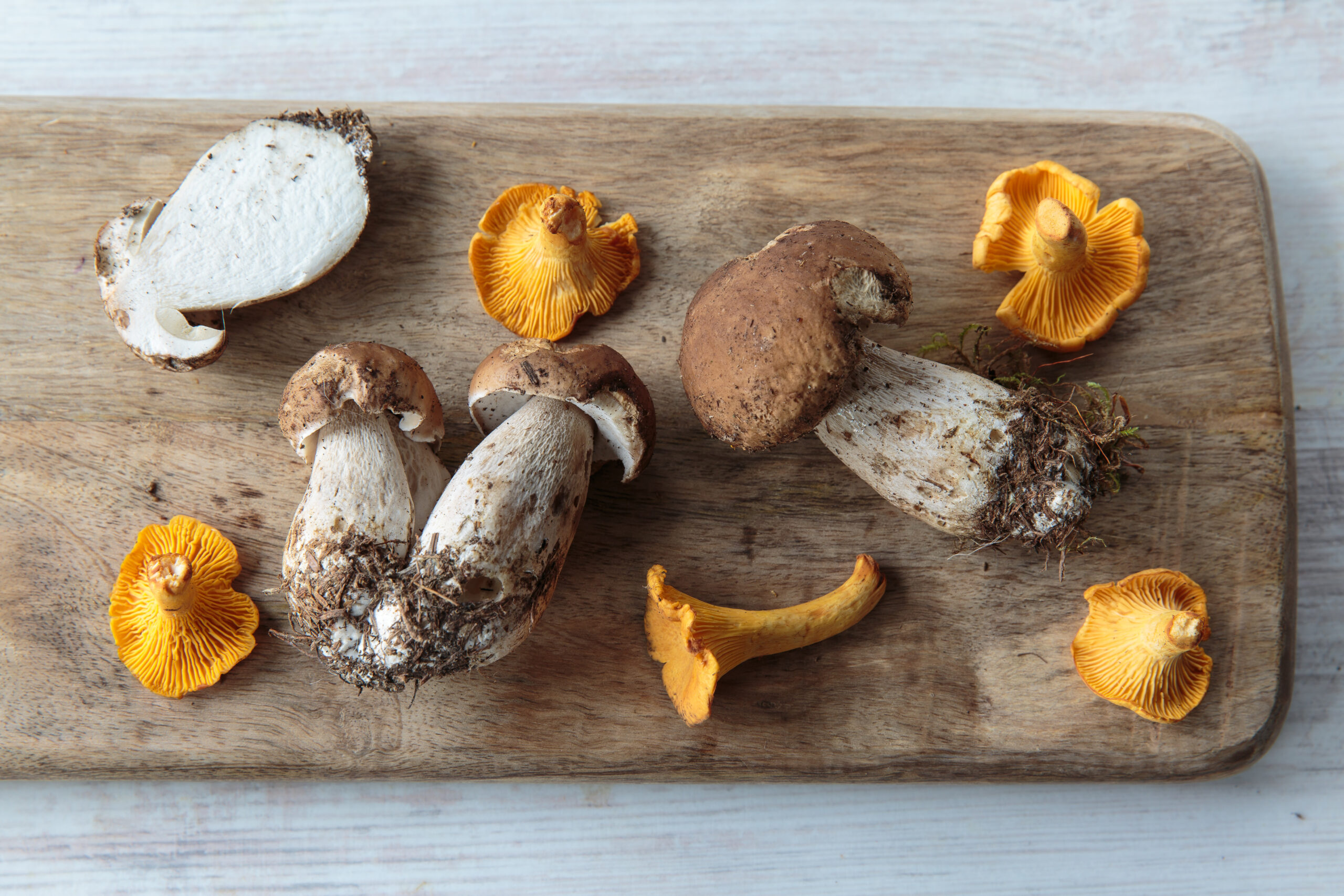Foraging for common types of edible mushrooms is all the rage these days. The pastime is gaining attention on TikTok and growing in popularity nationwide, driving more folks to discover the appeal (and challenge) of locating and identifying wild mushrooms. And as hunters descend on the turkey woods, it’s hard to resist keeping our eyes peeled for a lone, wrinkly morel or a meaty chicken of the woods.
But like identifying any kind of wild food, foraging for edible mushrooms requires extensive knowledge on how to do so safely. North American Mycological Association president Trent Blizzard points out that to truly be a safe and effective mushroom forager, you must have a regional knowledge of the wild edibles available in your local woods. Mushroom species might grow near one type of tree in one region and near a different tree somewhere else. Similarly, a toxic look-alike might not exist in your home state, but could be quite prevalent if you decide to forage while on vacation. Never assume all mushroom species are the same everywhere.
Fortunately, there are some types of edible mushrooms that are so common and easy to identify that you can learn—with practice—how to safely forage for them. Here are six of Blizzard’s favorite edible mushrooms to forage and his tips for identifying them.
Morel Mushrooms
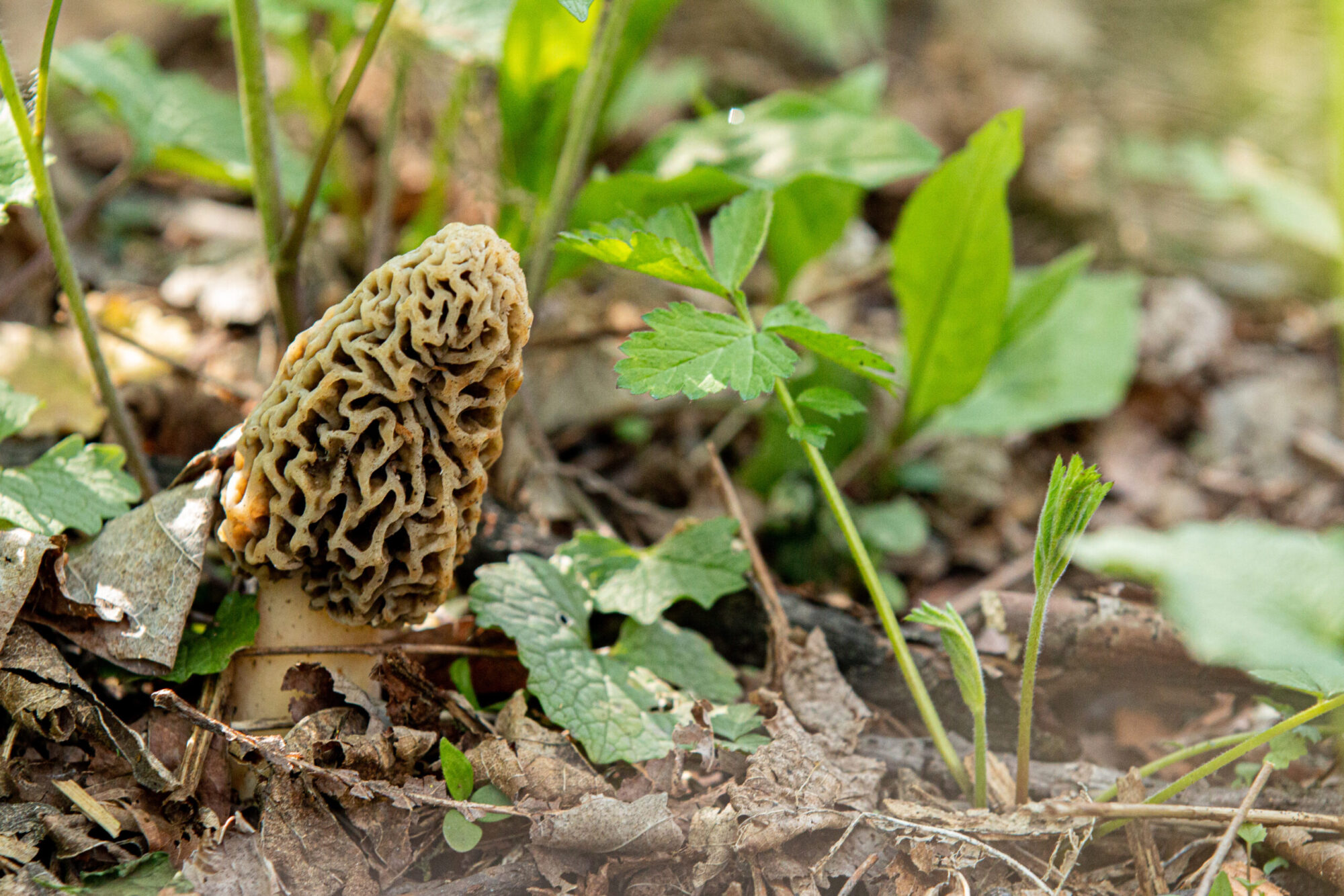
We’ll kick off with what is probably the most popular and easily identifiable wild mushroom in the woods of North America. Morel mushrooms are easy to identify thanks to their unique look, and beloved for their umami-rich flavor. Morels lend well to omelets, pastas, sandwiches, salads, and soups. They can be prepared quickly or dehydrated and stashed in the pantry.
How to Identify Morel Mushrooms
Morels are so distinct because of their porous fruiting body that slightly resembles a cone-shaped sponge or brain. The color can range from light tan to dark brown or black. Some morels are more circular, while some are more elongated.
“Morels are hollow in the middle, and the cap is directly connected to the stem,” Blizzard explains. “They have hollow pits and they come up in the spring straight out of the dirt.”
Morel Mushroom Identification
- Porous, cone-shaped cap
- The color of morels could be light tan to black
- Short, thick stem, usually a lighter color than the cap
- Completely hollow interior from top of cap to bottom of stem
- Cap attaches directly to stem, no overhang
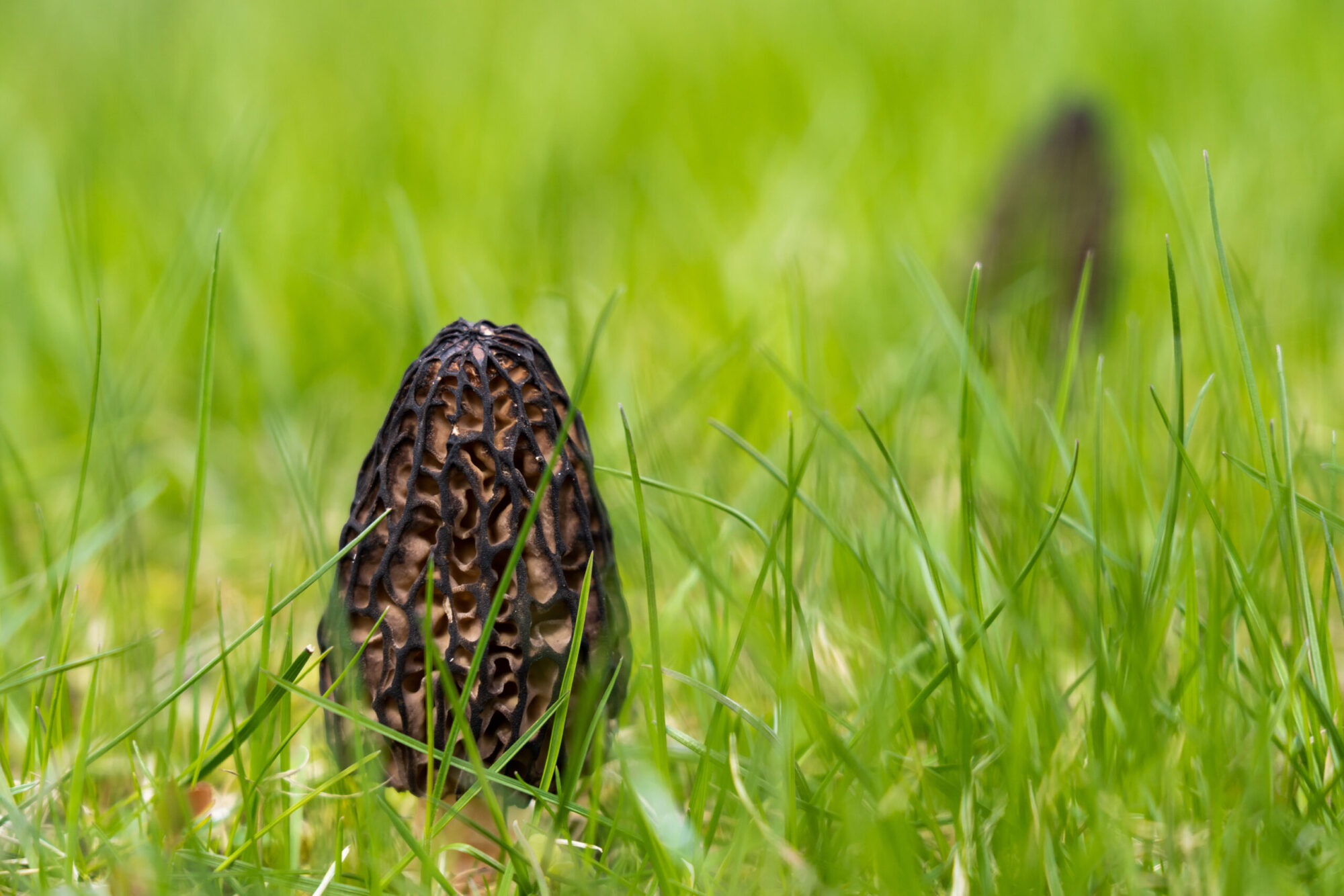
False morels, the most common look-alike for this type of edible mushroom, are not hollow in the middle, and the caps billow over the stems like an umbrella, only attaching at the very top of the stem. False morels look more brainy than real morels, often with more wrinkles, folds, and channels than true pores. The best way to tell the difference is to slice the morel in half the long way to get a cross-section view. If the mushroom is perfectly hollow, you’ve found the woodland delicacy. If not, discard the mushroom and don’t eat it.
Where Do Morel Mushrooms Grow?
Another reason morels are so popular is because they’re so widespread. They grow pretty much anywhere in North America that has shady, wet, temperate weather in the springtime. As soon as nighttime temperatures stay above 50°F, morels will start popping out of the ground.
Read Next: 12 Tips for Finding More Morel Mushrooms
Blizzard says that morels most commonly grow around ash or elm trees. To find them, search fresh wildfire or prescribed burn areas, woodland edges, areas under or near downed trees, and near water.
Oyster Mushrooms
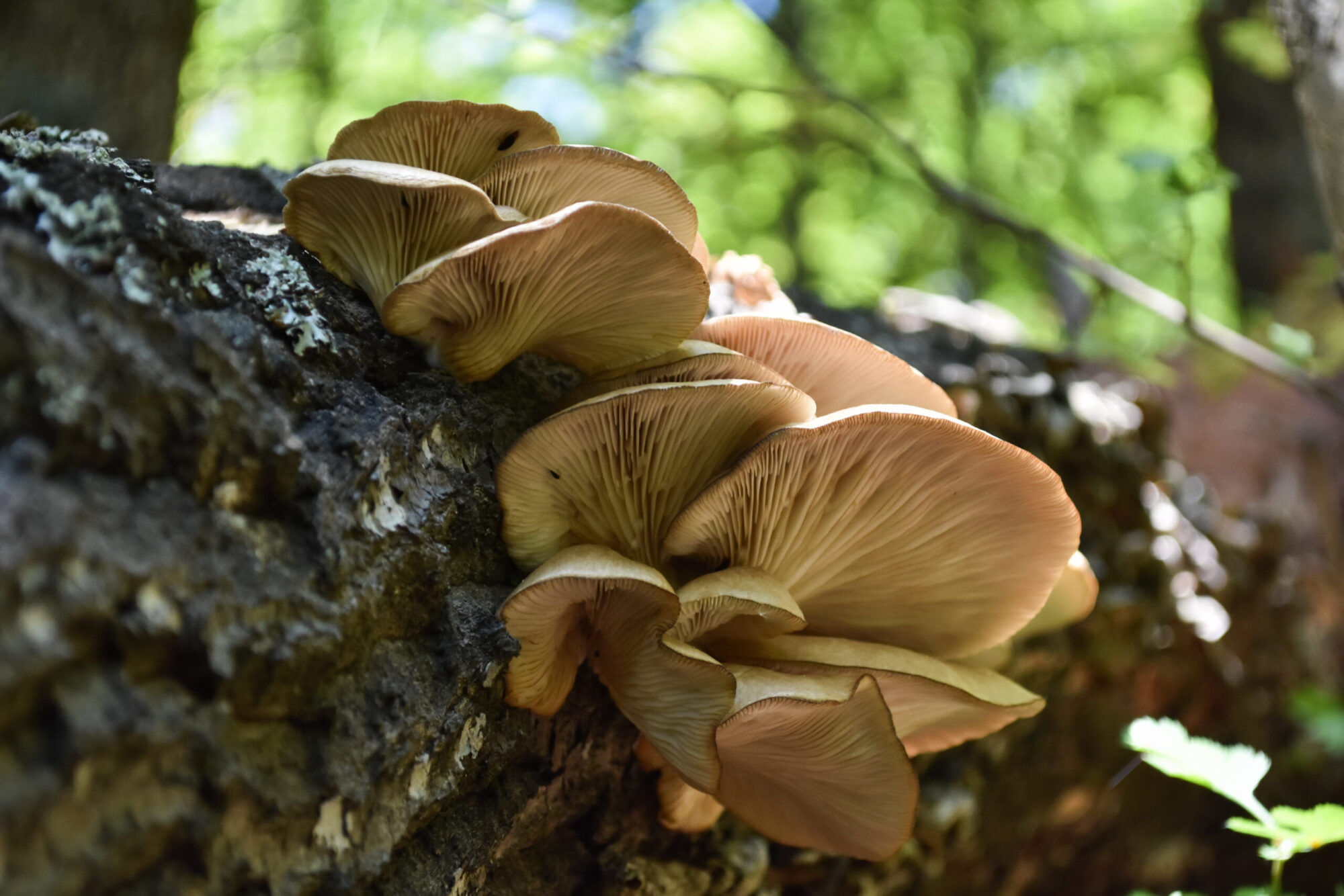
You might recognize oyster mushrooms from your local grocery store. That’s because they’re a commonly cultivated fungi as well as a wild one. Their dense texture makes oyster mushrooms a preferred meat substitute in many dishes. Bread, fry, and coat them in buffalo sauce if you want to mix things up on wing night.
How to Identify Oyster Mushrooms
Oyster mushrooms grow in a cluster of small fungal discs that each fan out at the end of a thick, white stem. Within the cluster, the individual mushrooms layer with each other similar to how rose petals grow. Oyster mushrooms can be a variety of hues, although the most common ones in the woods range from a pearly tan to gray or slightly blue.
“They have a shelf-like appearance, almost like saucers,” Blizzard says. “They could be big or small, and they have gills. The gills are decurrent, [which means] they run into and become part of the stem, where it attaches to the wood.”
The fungal discs can vary in shape and size. Older ones look more like oyster shells and are broader and flatter. Their edges might be less round and more irregular. Immature oyster mushrooms are thicker and stubbier with more perfectly rounded edges. (You can harvest and enjoy both.)
Oyster Mushroom Identification
- Cluster of layered lobes on individual stems
- Younger lobes are more rounded, older ones flatter and potentially irregular in shape
- Light gray, tan, or blue-tinged with lighter-colored stems
- Gilled underside
- Grow from dead or dying trees
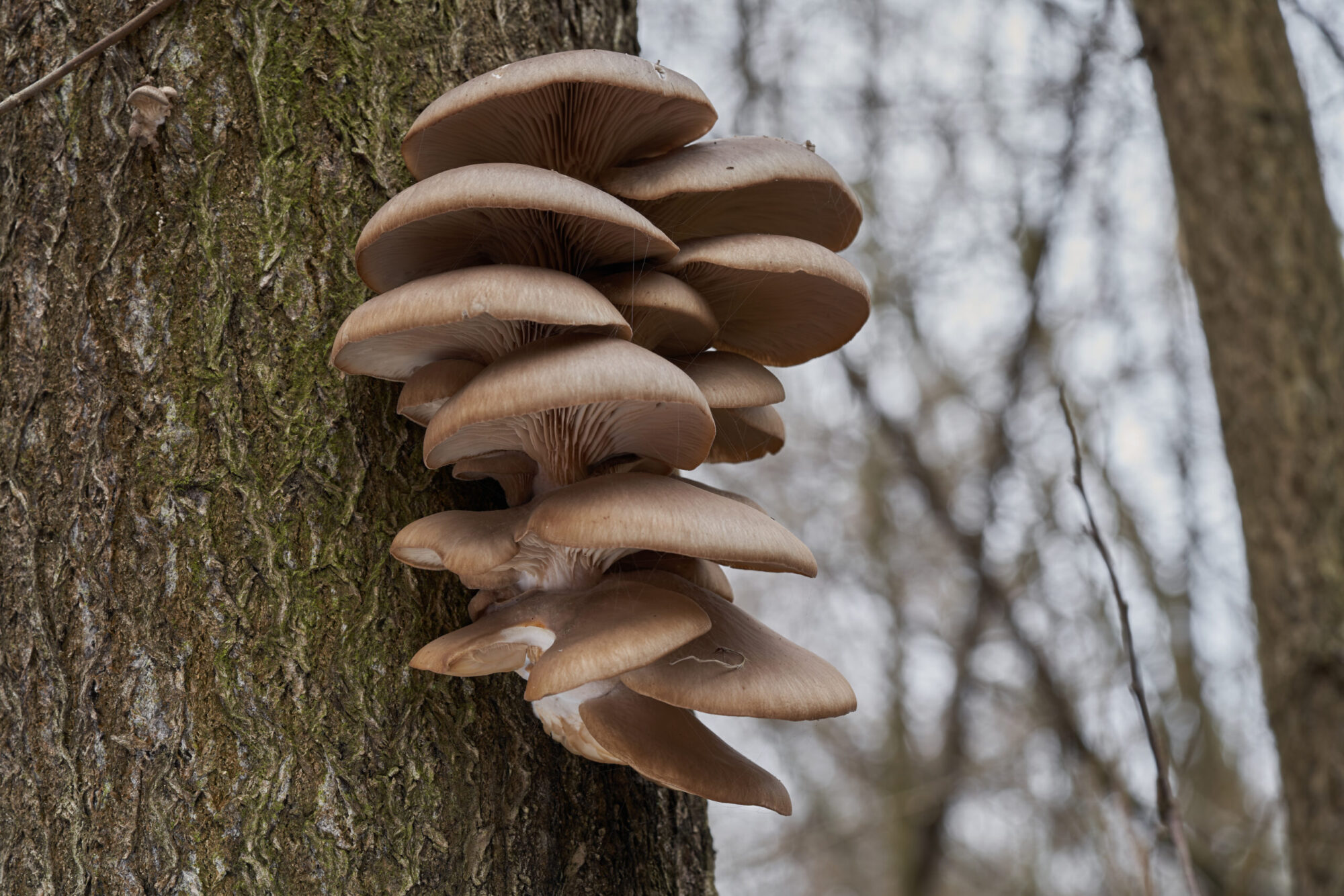
Oyster mushrooms don’t have many look-alikes. One worth noting is the Jack-o’-Lantern mushroom, which grows in similar clusters but is oranger and puffier. For this reason, these poisonous mushrooms are more commonly confused with other types of edible mushrooms like chicken of the woods and chanterelles (more on these in a minute).
Where Do Oyster Mushrooms Grow?
Blizzard explains that wild oyster mushrooms can be found on either fallen or dead trees, unlike other mushroom species that prefer live trees. They grow best in temperate, deciduous forests with lots of shade. Look for them on cottonwood, willow, aspen, or alder trees across northern and mountainous regions, according to the University of British Columbia.
Hen of the Woods Mushrooms
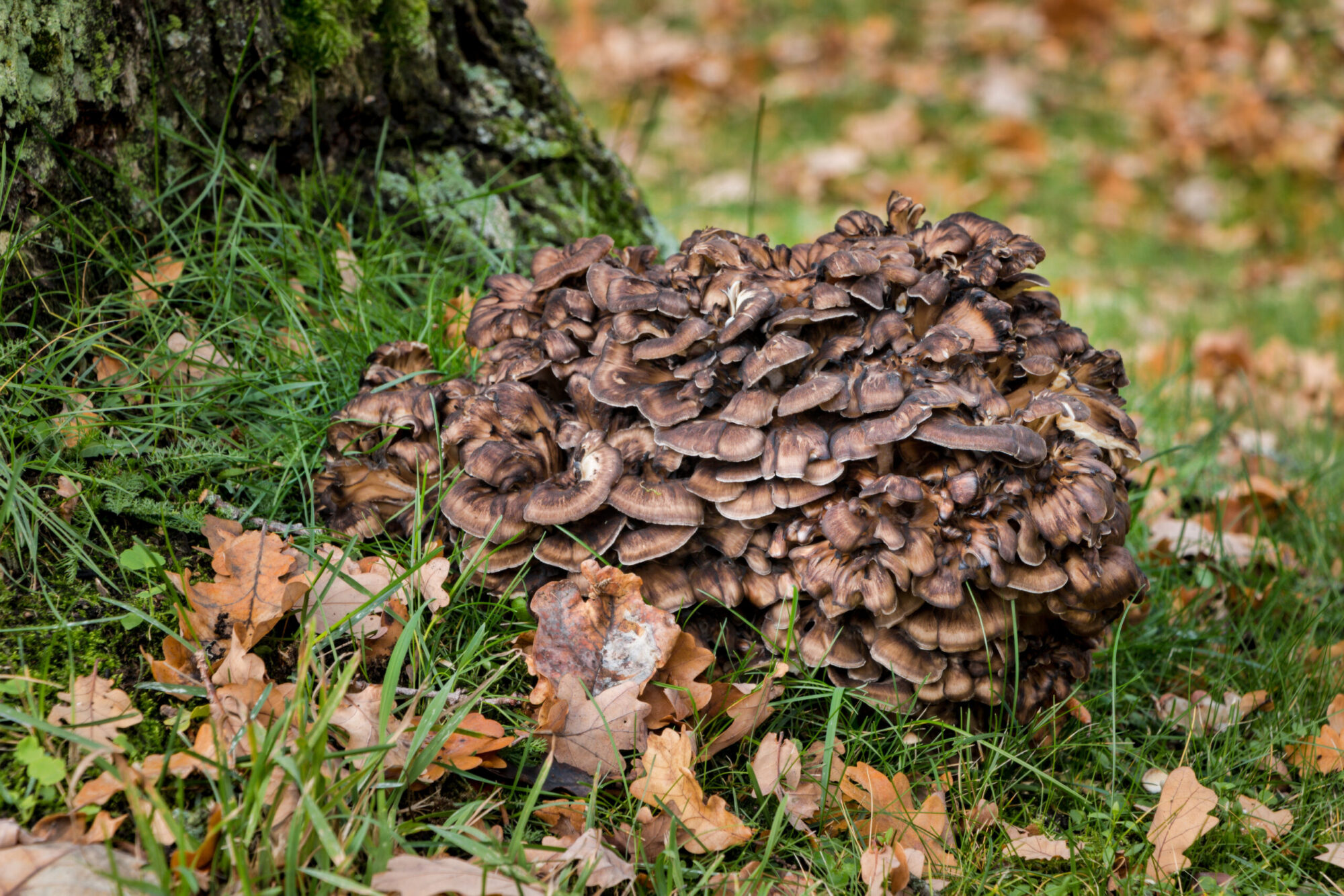
The hen of the woods, also known as the “maitake” mushroom, is a famous fungi among foragers. The flavor of this mushroom is often described as strong and slightly peppery. Native to eastern Asia, Europe, and North America, the hen of the woods has long been used as a medicinal superfood known to boost the immune system and lower cholesterol, according to WebMD. It even suppressed cancerous cell production in mice, Healthline reports. Hen of the woods are said to resemble a chicken with its feathers fluffed up, hence the nickname. These clusters of wild mushrooms can grow extremely big, up to 40-plus-inches wide.
How to Identify Hen of the Woods Mushrooms
A full-bodied hen of the woods, similar to a young patch of oyster mushrooms, is a layered cluster of fungal discs. Unlike oyster mushrooms, however, hen of the woods have a darker brown hue and the edges of the mushrooms are more scalloped and jagged than rounded. The clusters are often spherical and thick. If you cut into one, the cross-section will look like a head of cauliflower, thanks to the mushroom’s white flesh, Blizzard says.
The underside of this type of edible mushroom has tiny pores rather than gills. As hen of the woods clusters age, the fruiting bodies will shrivel and become chewier. The edges of the fungal discs might split.
Hen of the Woods Identification
- Large, full, round cluster of tan-to-brown lobes with irregular, scalloped edges
- Grows at the base or on the roots of living, dying, or dead oak trees
- White flesh inside
- Porous underside
- Toughens with age
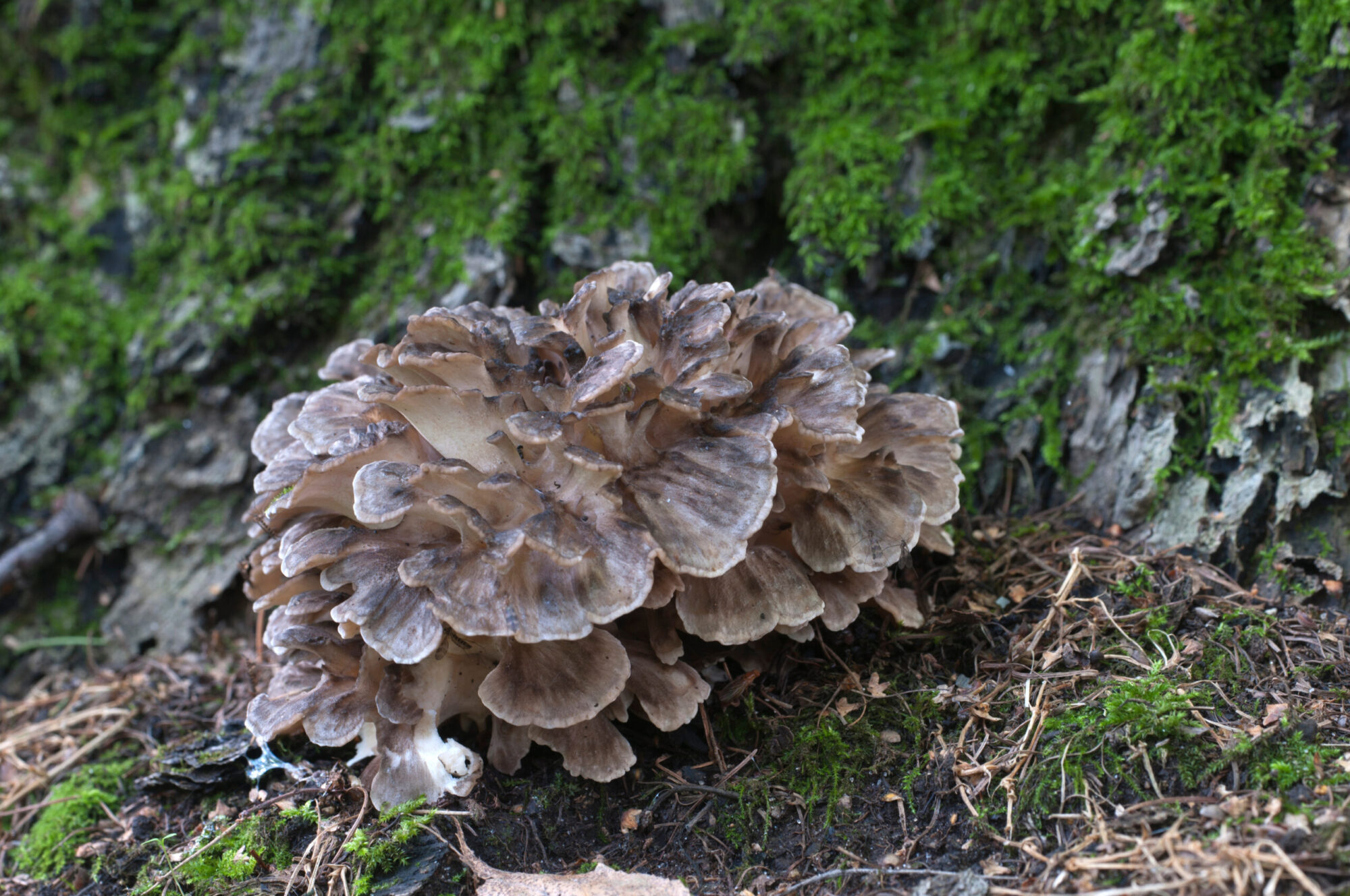
There are no poisonous look-alikes for hen of the woods mushrooms. The few look-alikes they do have are edible and easily distinguishable based on their color and shape. The closest look-alike, the black staining polypore mushroom, bruises to a black color when handled. This mushroom isn’t poisonous and is also considered a tasty edible species.
Where Do Hen of the Woods Mushrooms Grow?
Hen of the woods mushrooms grow in northeastern North America on large oak trees in the fall, Blizzard says. Look for the big clusters growing on oak tree roots or at the very base of the trunks. They’ve been found as far south as Missouri and as far west as Minnesota and Wisconsin, according to Alan Bergo of Forager Chef.
Chicken of the Woods Mushrooms
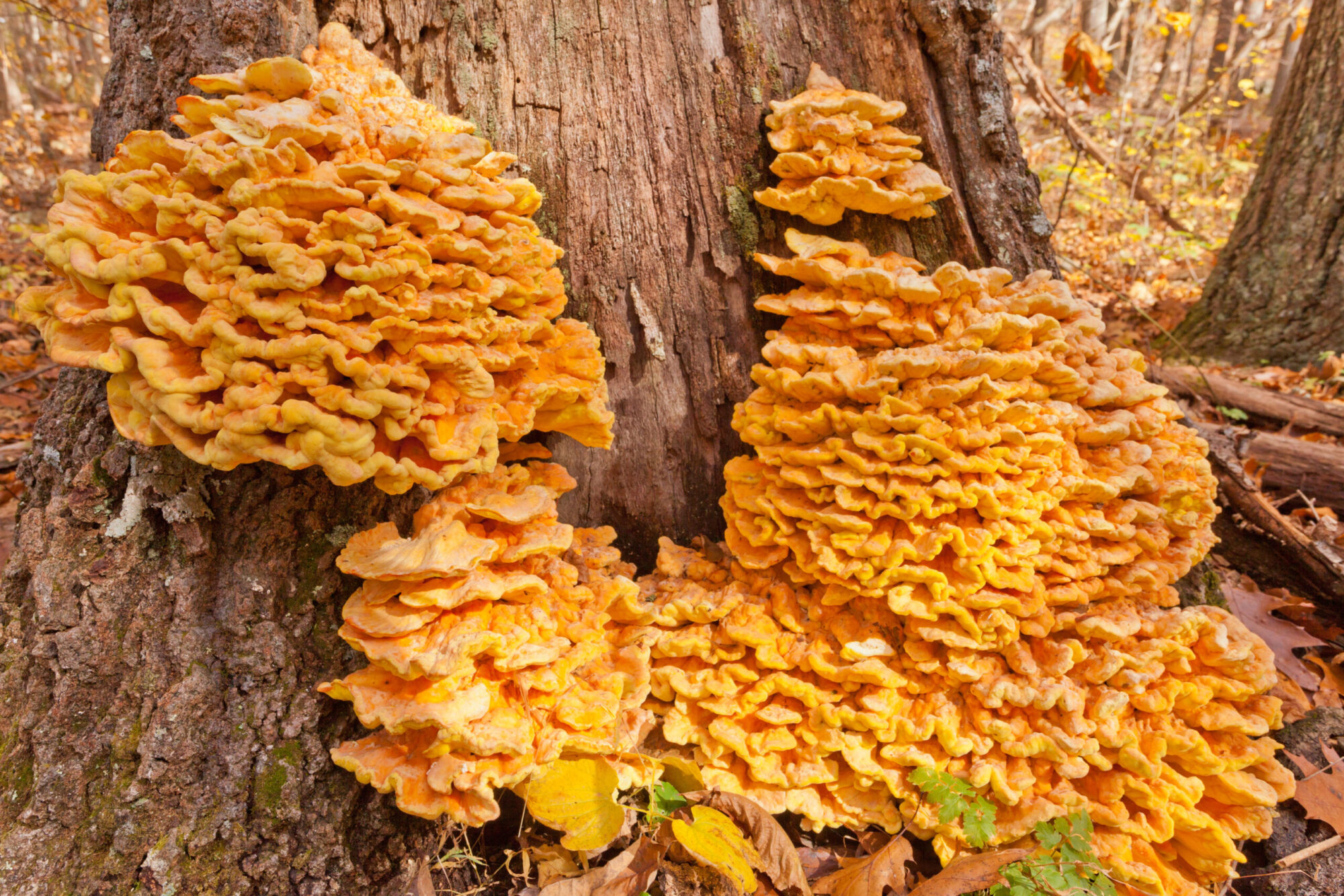
When it comes to actually spotting wild mushrooms, the hardest to overlook is the large, brilliantly-colored chicken of the woods. Similar to hen of the woods, this type of edible mushroom can grow multiple feet in width. But what takes the chicken of the woods a step further is its bright orange color that’s impossible to miss in any forest.
“Chicken of the woods is a really beautiful, shelf-shaped, orange-and-gold mushroom. It’s quite spectacular,” Blizzard says. “It has the consistency of chicken and is really mild in flavor.”
How to Identify Chicken of the Woods Mushrooms
Lucky for beginner foragers, chicken of the woods is easy to identify. It usually grows on dead trees in big, flat lobes with pores underneath instead of gills. Chicken of the woods might also grow on living trees, especially those with open wounds. The lobes fan straight out from the tree without any discernible stems.
“You only want to harvest this mushroom when it’s younger and can be sliced easily with a knife,” Blizzard explains. “As it gets older, it gets tougher, so you only want the tender bits.”
Chicken of the Woods Identification
- Layers of bright orange-to-yellow fungal plates with irregular edges
- No stems, plates anchored straight to tree trunks or bases
- Thick, meaty texture and mild flavor similar to chicken
- Toughens with age
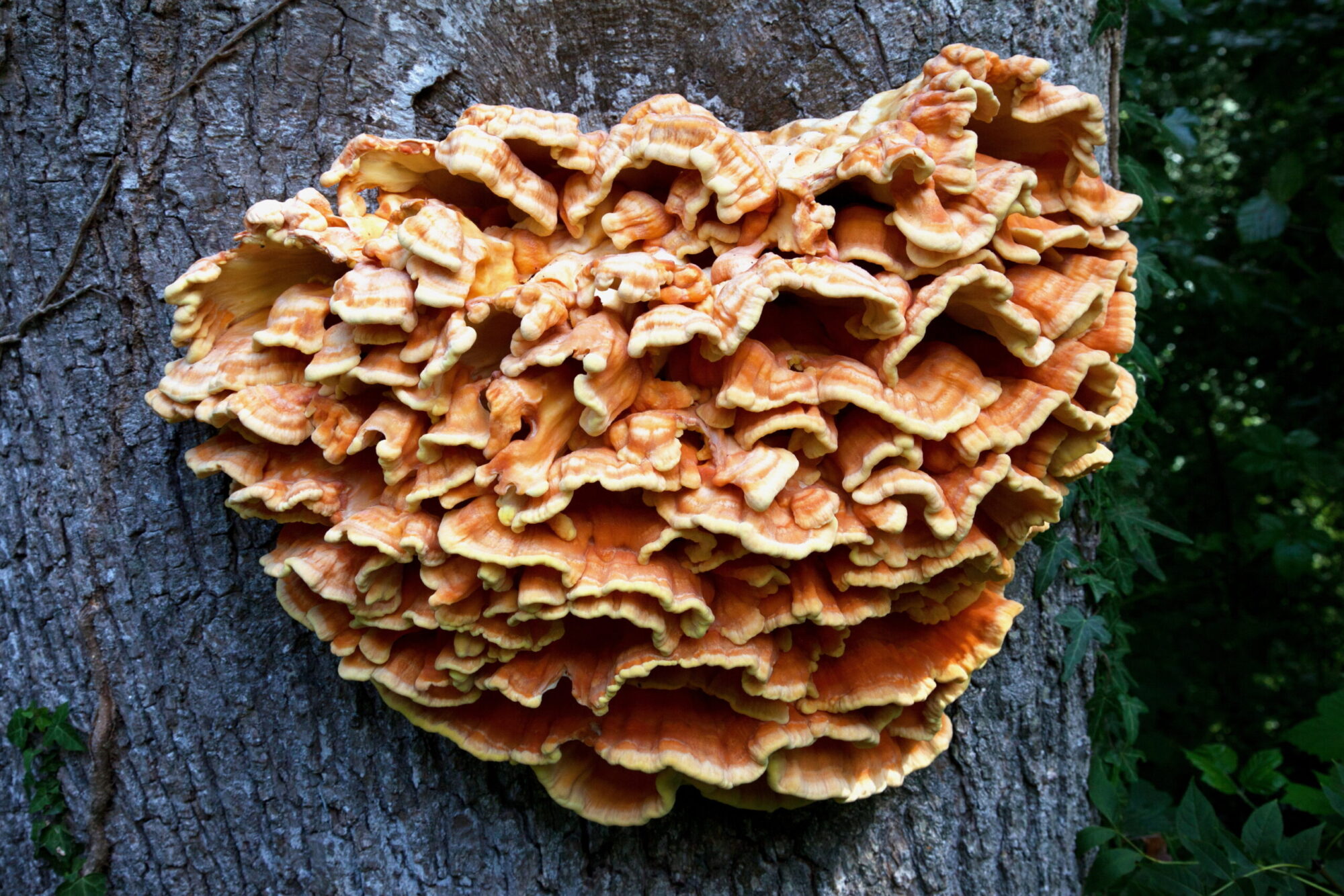
Similar to oyster mushrooms, the Jack-o’-Lantern mushroom is the most common look-alike for the chicken of the woods. But the Jack-o’-Lantern’s telltale gills, or long, deep slits under the cap, will set you straight, since the chicken of the woods has pores underneath instead.
Where Do Chicken of the Woods Mushrooms Grow?
If you’re searching for a brown-gray puff of hen of the woods, be on the lookout for chicken of the woods, too. The two species grow in similar areas: east of the Rockies in the northern reaches of North America in hardwood forests. While hen of the woods only grows in the fall, chicken of the woods will emerge in the spring. This type of edible mushroom often pops up at the base or on the trunk of oak trees.
Chanterelle Mushrooms
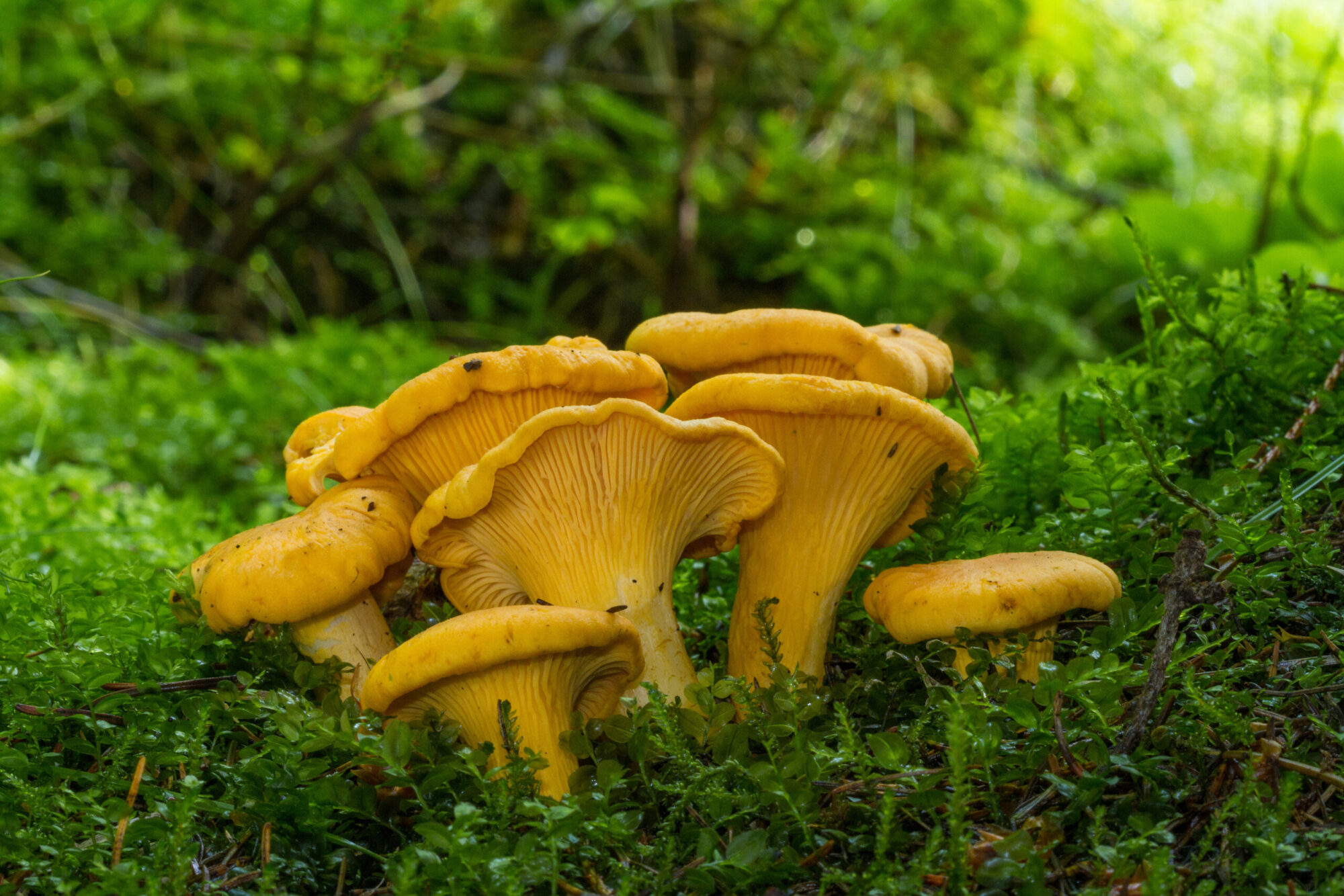
A favorite among North American hunters and wild cooks, chanterelles are another type of edible mushroom that are difficult to miss in the woods due to their golden color. They also give off a faint scent of apricots and have a distinct cupped shape, which explains why the Greek root of their name, kantharos, means “tankard.”
How to Identify Chanterelle Mushrooms
Chanterelles grow out of the forest floor. If you think you’ve spotted chanterelles, check for a few distinguishing characteristics. The mushrooms should be golden to orange in color and have thin folds underneath their plates, rather than gills. Those folds should fork and run mostly down the stem, which will taper as it plunges into the soil. The edges of the chanterelle are often wavy and scalloped rather than round.
The term “chanterelle” actually describes a family of mushrooms with multiple subspecies. False chanterelles aren’t toxic, but have a gross flavor and can cause some minor intestinal issues. These are the primary look-alike for this type of edible mushroom, and are recognizable by their true gills rather than forking folds and an orange color that gradually gets darker toward the center of the cap.
Chanterelle Mushroom Identification
- Golden yellow to orange in color
- Standalone mushroom with cupped, concave caps and tapering stems
- Caps are irregularly shaped, sometimes scalloped
- Deep, forked folds underneath instead of gills, forks stretch down length of stem
- Fruity, apricot scent
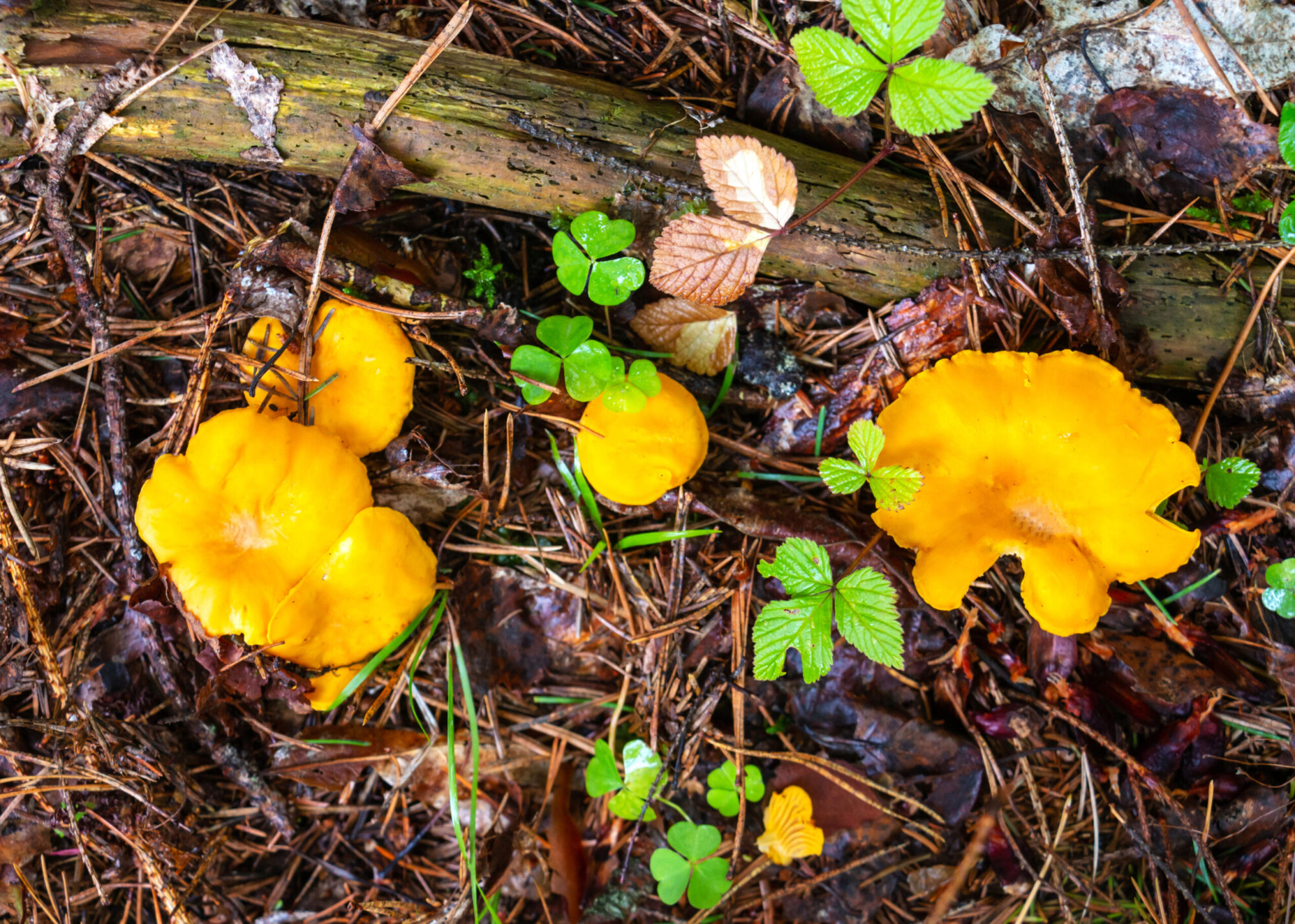
The other look-alike for chanterelle mushrooms is, once again, the Jack-o’-Lantern mushroom. These imitators have true, fine-edged gills and grow in clusters. The inside of its stems are often orange, whereas chanterelle stems have lighter-colored flesh.
Where Do Chanterelle Mushrooms Grow?
Chanterelle mushrooms grow individually, but are often clustered together in mossy forests with lots of conifer trees and near birch and oak trees in more mountainous regions. They sprout in the mid- to late-summer months and will reoccur in the same places year after year. Look for decaying leaves and grass instead of trees. They’ll only sprout from soil, never wood.
Wild Porcini Mushrooms
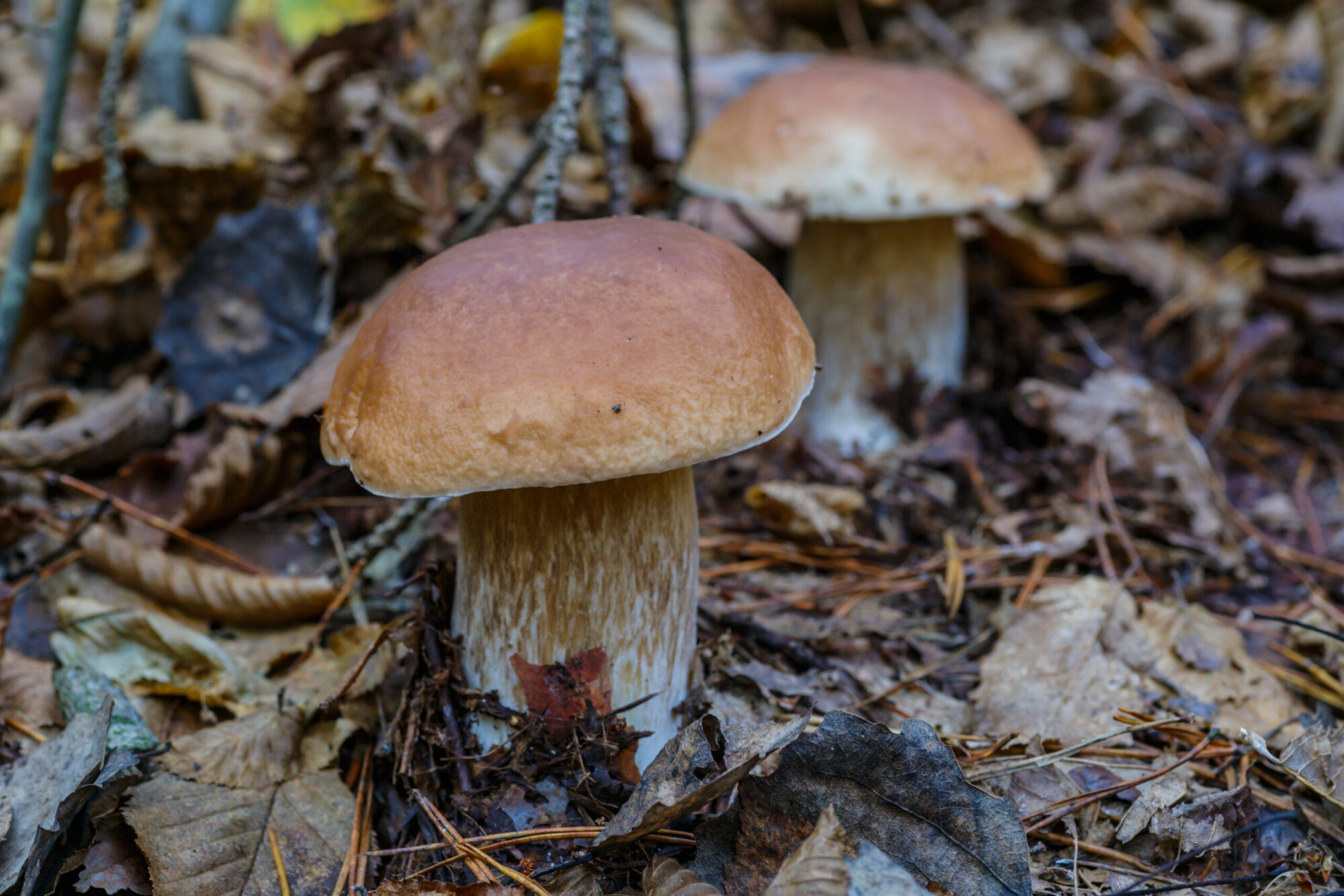
Few mushrooms fetch a higher price per pound than the porcini, also known as the king bolete. This type of edible mushroom is considered a delicacy among restaurant chefs, who might pay anywhere from $55 to $70 per pound for them. (While many people have tried cultivating porcini mushrooms and “porcini spores” are available for purchase online, these mushrooms are only available in the wild and experts consider grow-your-own kits to be scams.) Porcini mushrooms are also known for their meaty texture, which is why they’re filling and make fine substitutes in vegetarian dishes.
How to Identify Porcini Mushrooms
These mushrooms are instantly recognizable for their fat, puffy shape and stubby stems that are often as wide as—if not wider than—the caps. The stems are usually a light, creamy color and the caps range from light brown to caramel.
“They’re a really classic-looking mushroom,” Blizzard says, referring to the porcini’s firm flesh. He also points out that there are a variety of porcini subspecies that grow during different times of the year across the country.
Porcini Mushroom Identification
- Short, puffy, standalone mushroom with traditional “toadstool” shape
- Smooth caps are tan to caramel in color
- Stems are wide (sometimes wider than cap) and thick, lighter and creamy in color
- Caps are porous underneath
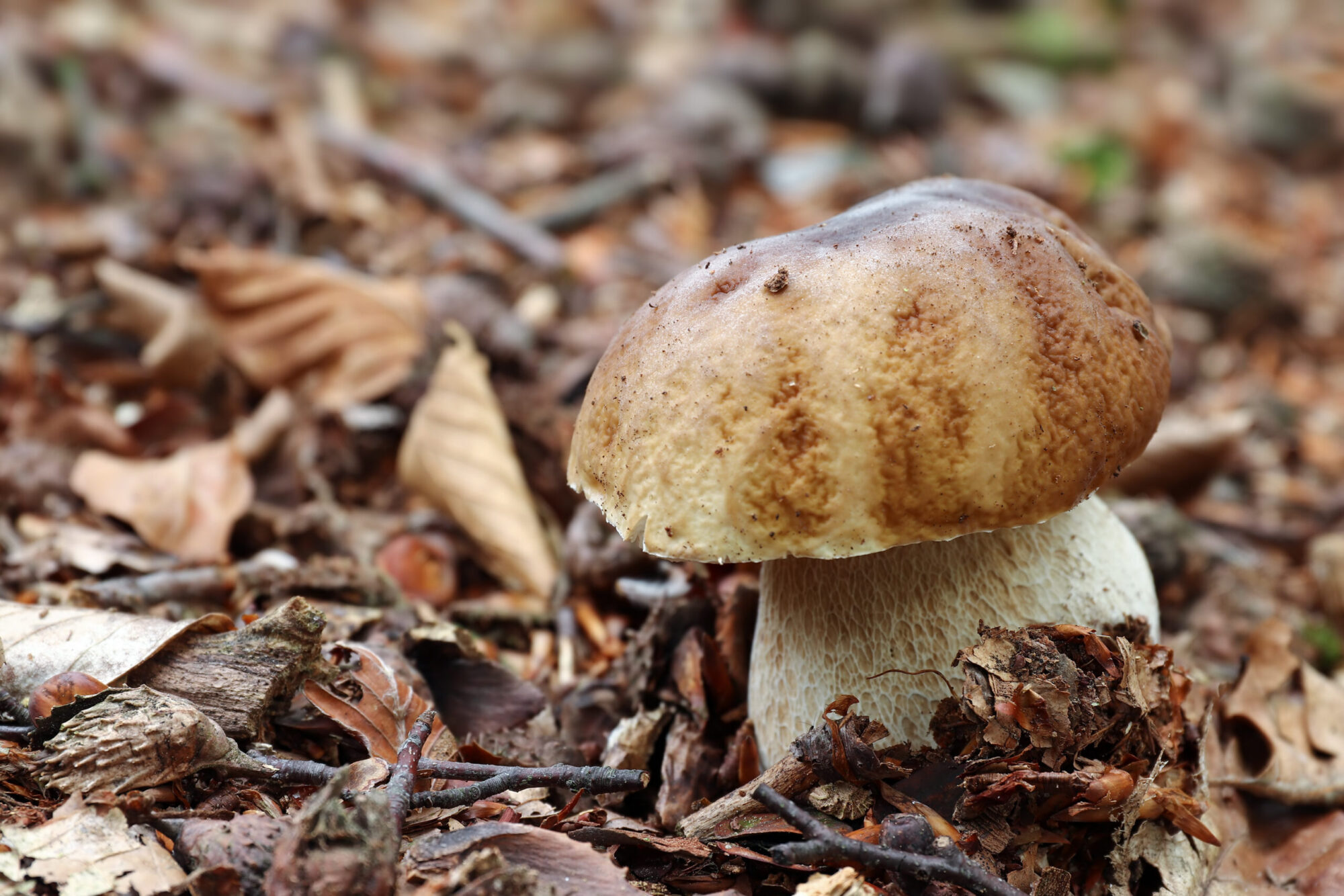
These mushrooms have a couple toxic look-alikes that make them an intermediate to advanced type of edible mushroom to identify. These look-alikes are subspecies of the Boletus genus, which means they’re related to the porcini, or king bolete, mushroom. For this reason, you shouldn’t harvest porcinis until you’re 100 percent confident in your ability to identify them. For example, one look-alike, Boletus huronensis, stains slightly blue upon being cut open, but otherwise looks similar to porcini.
Where Do Porcini Mushrooms Grow?
Like morel mushrooms, porcinis grow straight out of the soil. They’re distributed widely across the Northern Hemisphere. Even though they can be found in North America, they’re especially popular in Europe, ranging from Scandinavia to Italy and Greece, and even Morocco in Northern Africa. Porcinis grow in deciduous and coniferous forests, and can withstand a variety of climates, as long as the air remains somewhat humid and temperatures don’t drop near freezing. In other words, the porcini’s range is extremely broad, which makes finding them a needle-in-haystack situation. No wonder they’re so expensive.
Can You Eat Wild Mushrooms Raw?
No, you should not eat wild mushrooms raw. This is one of the most common misconceptions that beginner foragers have about types of edible mushrooms.
“All wild mushrooms need to be cooked,” says Blizzard. “When you hear people talk about getting sick from mushrooms, a good percentage of them probably either didn’t cook the mushrooms or didn’t cook them long enough. Mushrooms like [hen of the woods] and chicken of the woods really benefit from a good, long cook. It makes them much easier on your digestive system.”
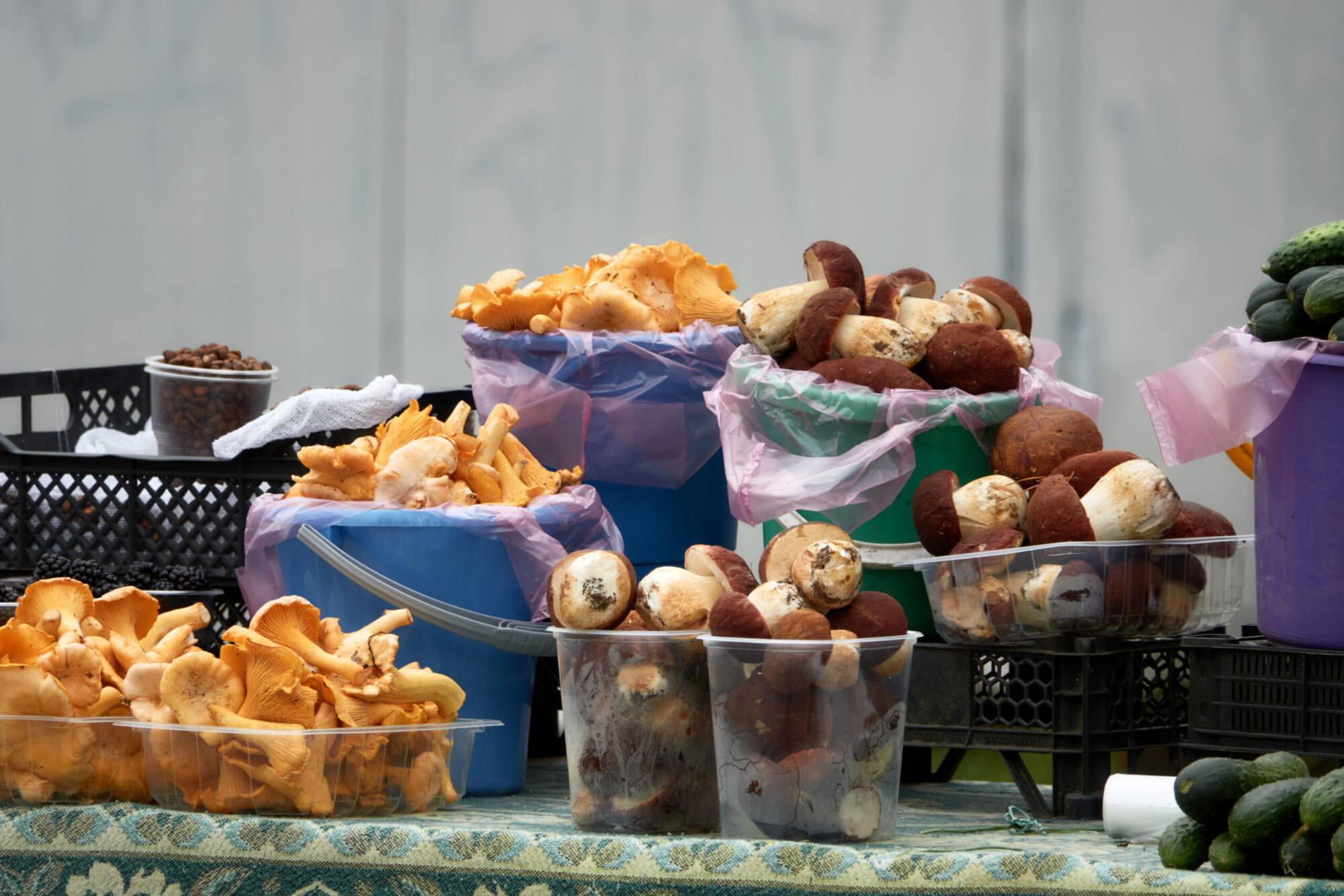
Blizzard points out that some mushrooms can be eaten raw in very small quantities. A single slice of raw porcini mushroom, for example, isn’t likely to make you sick. But taking that gamble can be dangerous—especially if there’s a chance you’ve misidentified the mushroom in the first place. Other edible mushrooms, like morels, are only edible when fully cooked. Undercooked morels are toxic and will make you sick.
Final Thoughts on Types of Edible Mushrooms
Before you get comfortable harvesting and cooking wild mushrooms, you must get comfortable identifying them, Blizzard says. These six species—morels, oyster mushrooms, hen of the woods, chicken of the woods, porcinis, and chanterelles—are a good place to start due to their distinct features, availability in a vast range of North America, and low number of toxic look-alikes. If you know how to identify and avoid the Jack-o’-Lantern mushroom, you can harvest half of these species with confidence.
Read Next: The Best Morel Mushroom Recipes
“There’s no simple rule of thumb. And if there was, it would be very geographic,” he says. “That rule could get you sick in California, but it might work fine in Virginia.”

